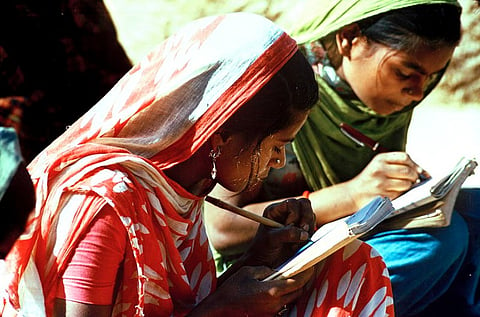

The Indian census defines a literate person as someone “aged seven years or older who can both read and write with understanding in any language."
Quite directly, this definition excludes individuals who can only read but cannot write and children below the age of six. Moreover, the census relies on self-reported data, meaning respondents or their families declare whether they are literate or not, without a formal test to verify these claims.
While convenient for large-scale surveys, this definition of literacy and the methodology used for measuring it is problematic — let us explore why.
UNESCO states that “beyond its conventional concept as a set of reading, writing and counting skills, literacy is now understood as a means of identification, understanding, interpretation, creation, and communication in an increasingly digital, text-mediated, information-rich and fast-changing world”.
While I often critique the Global North for universalising definitions, this is a rare exception that aligns with the essence of being literate today.
We live in an India where technology is increasingly accessible, “WhatsApp Universities” disseminate unchecked misinformation, polarising agendas shape public perception, and people are not merely consumers of content but producers of it.
A narrow interpretation of literacy as the mere ability to read and write grossly overlooks the broader competencies required to thrive in contemporary society.
Some might argue that in marginalised contexts where even basic needs go unmet, this broader view is a luxury, best reserved until everyone meets the census benchmark of literacy. Yes, basic literacy might enable someone to read a sign or fill out a form, but it does little to help them question misinformation, negotiate socio-economic barriers, or leverage technology for upward mobility.
Setting a low benchmark for literacy risks perpetuating systemic inequities rather than dismantling them. I am reminded of my student’s mother in Hyderabad, who painstakingly learned how to write a few sentences without really understanding them and sign her name in Telugu, just to shed the label of being illiterate.
It is not enough to celebrate rising literacy rates in our country if they do not translate into meaningful empowerment. To get there, we need to start with fixing gaps in how we assess literacy in our country. Here are some starting points:
Capture different dimensions of literacy
The Indian census must expand its definition to encompass critical thinking, numeracy, and functional skills, and consider the inclusion of digital literacy in the definition. However, the census uses a binary approach — either a person is literate or not, which is core challenge in capturing the various degrees of literacy.
Instead, treating literacy as a spectrum not only offer a more accurate representation of literacy but also guide targeted interventions to improve it.
Introduce verifiable literacy tests:
India’s literacy measurement methodologies rely heavily on self-reporting and assumptions, leading to inflated rates and inaccurate data. It is crucial to replace or complement self-reported data with simple, scalable literacy assessments. These could include reading comprehension exercises, functional tasks (example, interpreting a bus schedule), and basic digital literacy tests.
Account for multilingual contexts:
India’s linguistic diversity is vast, with hundreds of languages spoken across the country, many of which have no formal script. My mother tongue, Tulu, is an example.
Current literacy assessments often exclude those who are literate in oral languages or regional dialects, disregarding their ability to communicate, understand, and engage with their cultural and social realities. Literacy assessments must be designed to accommodate these contexts, using oral comprehension and verbal expression and reasoning tests.
Acknowledging that this is very difficult to execute at population scale, we must invest in researching innovative measurement tools and methodologies.
All this is easier said than done, but it must be said and should be done. The path to true literacy requires courage to face our educational realities, sustained investment, and collective will. It demands that we raise the bar and challenge superficial metrics.
I look forward to an India where ten out of ten citizens are truly literate.
(Aishwarya Shetty is Education Specialist, Innovations Development Programme at Education Above All Foundation. Views expressed are her own)
